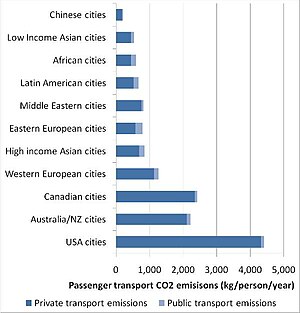Ralph talked about parts of neighborhoods that have smaller roads designated for bikers first, cars second. This would definitely encourage more bike riding in that particular area but I do not think that is a good way to promote sustainable transport overall. Bicycling cannot replace cars in today's society because of the distances travelled. Personally, I wouldn't even want something like that in my own neighborhood. Being in a car having to yield to bikers on a narrow road would be frustrating if you're just trying to go a few blocks to get back home. Sustainable transport isn't just about improving the environment, it's also about efficiency.
One idea that was mentioned that definitely needs to be implemented everywhere is the cost of subway/metro riding lowering the more frequently the customer uses the service. Cheap bus and subway prices would definitely decrease car congestion in cities. That is one of the easiest changes to implement within the next couple months. For now, green technology keeps developing and won't be mainstream in cities until the initial cost is cheaper than it currently is. We need to make changes starting with things such as the subway prices that will affect all city dwellers positively and also clean up the smog created by mass amounts of cars on the roads.

This is something that definitely needs to be changed